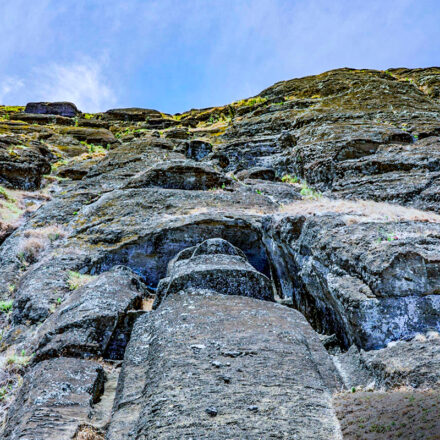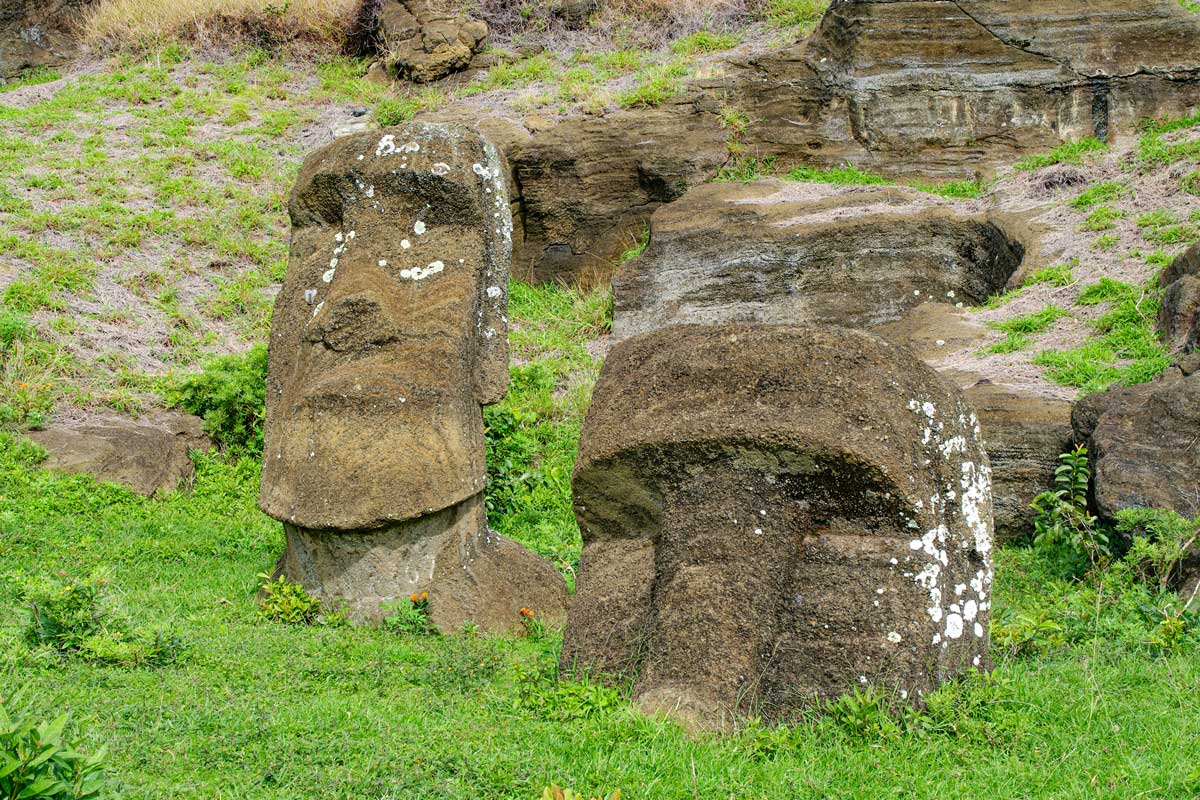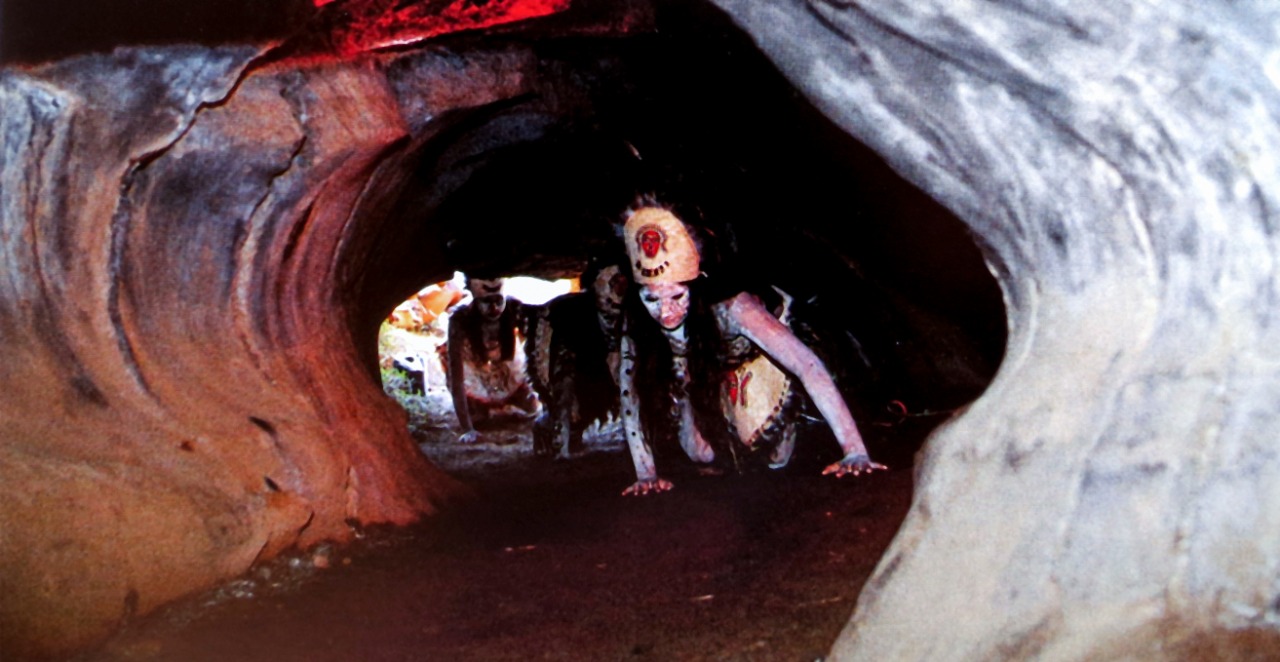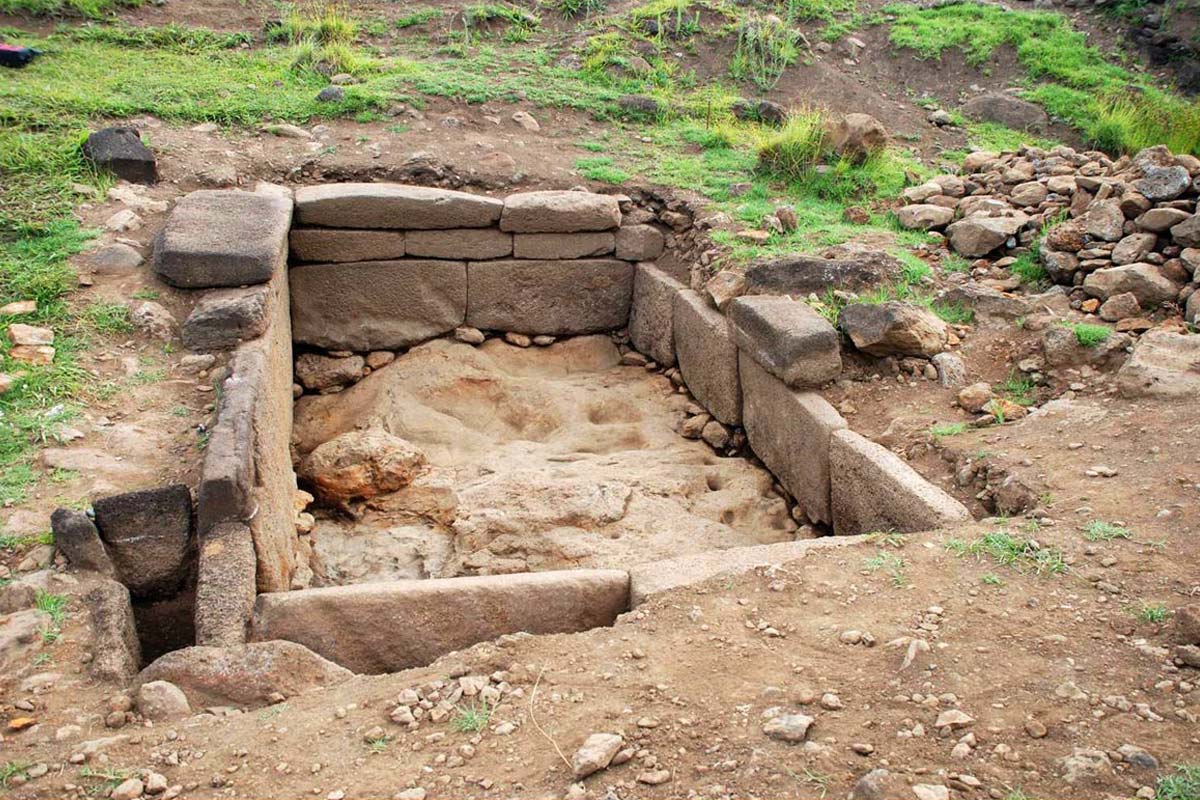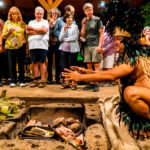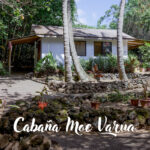Rapa Nui
An enormous petrified sponge

For the Rapanui, there are three principal types of caves according to their structure : Karava, Ana Kionga and Ana. The Karava caves are small grottoes, usually found on the cliff sides in which one person could hide. The Ana Kionga caves are small ones which were used as safe havens for persecuted people in times of war. The name Ana is applied to all natural caverns of large dimensions, including those which have been built or reconstructed, regardless of their use.

The caves served not only as living spaces or refuges for people or even complete families, but also to keep maidens where they could whiten their skin for spiritual purposes (Ana O Keke and Ana Hue Neru), to hold religious rites (Ana Kai Tangata and Ana Te Pora) or to store food and family treasures. According to Lavancherie (1935) there used to be “workshop” caves in which bone and obsidian objects were manufactured. Some caves served as collective tombs, while others were set aside as individual burials, where the old people could go when it was their time to die. Only a few years ago, this happened for the last time. The family searched for their missing grandmother for more than a month without finding a trace of her. She had gone to her rest.
Featured Reports:
Archaeologists’ Tales
Archaeology is the branch of anthropology that aims to reconstruct the history of humanity from its material remains. The problem is that a very important part of human creation is not expressed in material form, and, on the other hand, many times it is not possible...
Rano Raraku, New excavations in Easter Island’s Moai quarry
The new excavations carried out in Rano Raraku, the moais quarry, leave us an enormous archaeological wealth and vestiges on the Rapa Nui culture.
Ana Hue Neru
Ana Hue NeruThe Caverns to whiten the YoungLas Cavernas para blanquear a Jóvenes As far back as the late 19th Century, various expeditions have attempted to unravel the mysteries of the Rapanui culture through archaeological research and the oral traditions of the...


